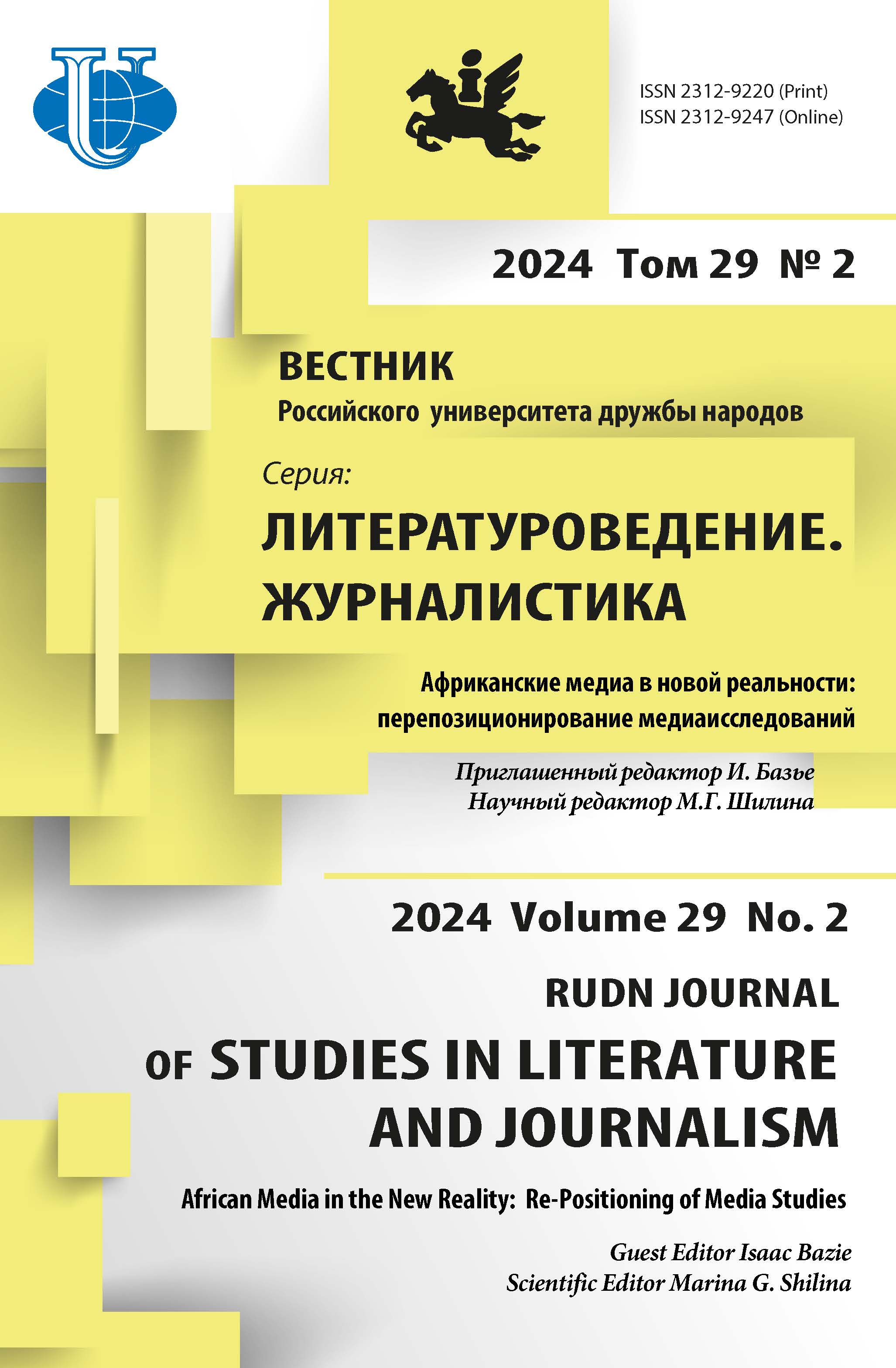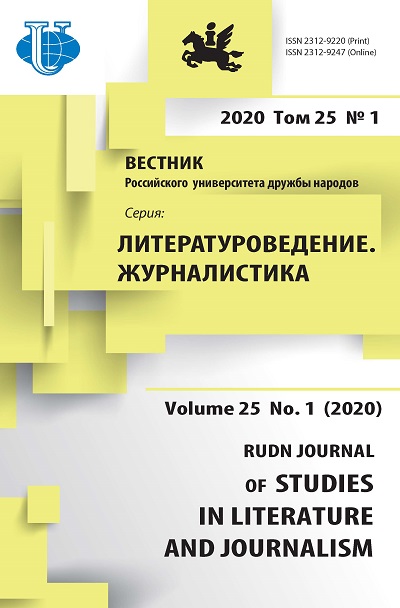The reasons for the decline in popularity and prospects for the development of linear television
- Authors: Proskurnova E.L.1
-
Affiliations:
- TV Company “TV Center”
- Issue: Vol 25, No 1 (2020)
- Pages: 146-154
- Section: JOURNALISM
- URL: https://journals.rudn.ru/literary-criticism/article/view/23616
- DOI: https://doi.org/10.22363/2312-9220-2020-25-1-146-154
Cite item
Full Text
Abstract
The author analyses what is happening to modern television news. While the Internet becomes more and more popular, driven by video-sharing sites and special mobile news apps, television viewing declines. The main part of the audience of modern TV-news programs consists now of older people, the new generation of viewers refuses to watch TV, preferring to learn the information about the world from the network. TV-managers are trying to find new ways to offer consumers the actual information, new formats of news, to reach younger audiences, as well as to discover a new philosophy of their own existence in a rapidly changing environment. The purpose of the author of the article - is to map recent changes in traditional television viewing, and to initiate discussion on one of the most controversial issues of the practice of development of modern mass communication channels: how will news broadcasting look in 10 or 20 years and whether anything can replace it. The relevance of this topic is high due to the rapid development of the Internet space as an alternative source to other media channels.
Keywords
About the authors
Evgeniya L. Proskurnova
TV Company “TV Center”
Author for correspondence.
Email: karikh.el@gmail.com
reporter and TV-host of TV-Center Channel; applicant of the Department of Mass Communications, Faculty of Philology, Peoples’ Friendship University of Russia (RUDN University)
33 Bolshaya Tatarskaya St, bldg. 1, Moscow, 115184, Russian FederationReferences
- Nielsen, R.K., & Sambrook, R. (2019). What Is Happening to Television News? Reuters Institute for the Study of Journalism. Retrieved from https://digitalnewsreport.org/ publications/2016/what-is-happening-to-television-news/ (accessed: 06.08.2019).
- The communications market report 2015. Retrieved from https://www.ofcom.org.uk/ data/assets/pdf_file/0022/20668/cmr_uk_2015.pdf (accessed: 06.08.2019).
- The communications market report 2017. Retrieved from https://www.ofcom.org.uk/ data/assets/pdf_file/0017/105074/cmr-2017-uk.pdf (accessed: 03.08.2019).
- Daily time spent watching television in Germany 1997–2018. Retrieved from https:// www.statista.com/statistics/380182/tv-consumption-viewing-time-germany/ (accessed: 03.08.2019).
- The Nielsen total audience repoty: Q2 2017. Retrieved from https://www.nielsen.com/ us/en/insights/reports/2017/the-nielsen-total-audience-q2-2017.html (accessed: 03.08.2019).
- TV Index. Ezhegodniy otchet o provedennyh issledovaniyah ob'ema zritelskoy auditorii telekanalov (teleprogramm, teleperedach) za 2017 god [Annual report on the conducted research volume of the audience of TV channels (TV programs, TV shows) for 2017]. Retrieved from https://mediascope.net/rkn/#view (accessed: 03.08.2019).
- Mole, A. (2008). Sociodinamica kul'tury [Sociodinamic of Culture]. Moscow: LKI Publ.
- News Consumption in the UK: 2018. Retrieved from https://www.ofcom.org.uk/ data/ assets/pdf_file/0024/116529/news-consumption-2018.pdf (accessed: 06.08.2019).
- Klassisches TV ist auf dem Rückzug. Retrieved from https://www.bitkom.org/Presse/ Presseinformation/Klassisches-TV-ist-auf-dem-Rueckzug.html (accessed: 06.08.2019).
- About JX Press. Retrieved from https://jxpress.net/about/about-jx-press/ (accessed: 10.08.2019).
- Stories that move. Retrieved from https://www.groupninemedia.com/brands/nowthis (accessed: 10.08.2019).
- Now this. Retrieved from http://wikireality.ru/wiki/NowThis (accessed: 06.08.2019).
- China wants to make the Communist Party 'cool' again with digital propaganda, but is it working? Retrieved from https://www.abc.net.au/news/2019-03-02/china-wants-tomake-the-communist-party-cool-again/10828154 (accessed: 06.08.2019).
- Cisco Visual Networking Index: Global Mobile Data Traffic Forecast Update, 2017–2022 White Paper. Retrieved from https://www.cisco.com/c/en/us/solutions/collateral/serviceprovider/visual-networking-index-vni/mobile-white-paper-c11-520862.html (accessed: 06.08.2019).
- Vartanova, E.L. (2015). Televidenie: postsetevaya model' [Television: Post Network Model]. Iskusstvo kino, (4). Retrieved from http://old.kinoart.ru/archive/2015/04/televideniepostsetevaya-model (accessed: 16.09.2019).
- Urazova, S.L. (2018). Cifrovoe televidenie v poiske semanticheskogo prognozirovaniya [Digital Television in Search of Semantic Prediction]. Vestnik Moskovskogo universiteta. Seriya 10. Zhurnalistika, (6), 235–253.
















